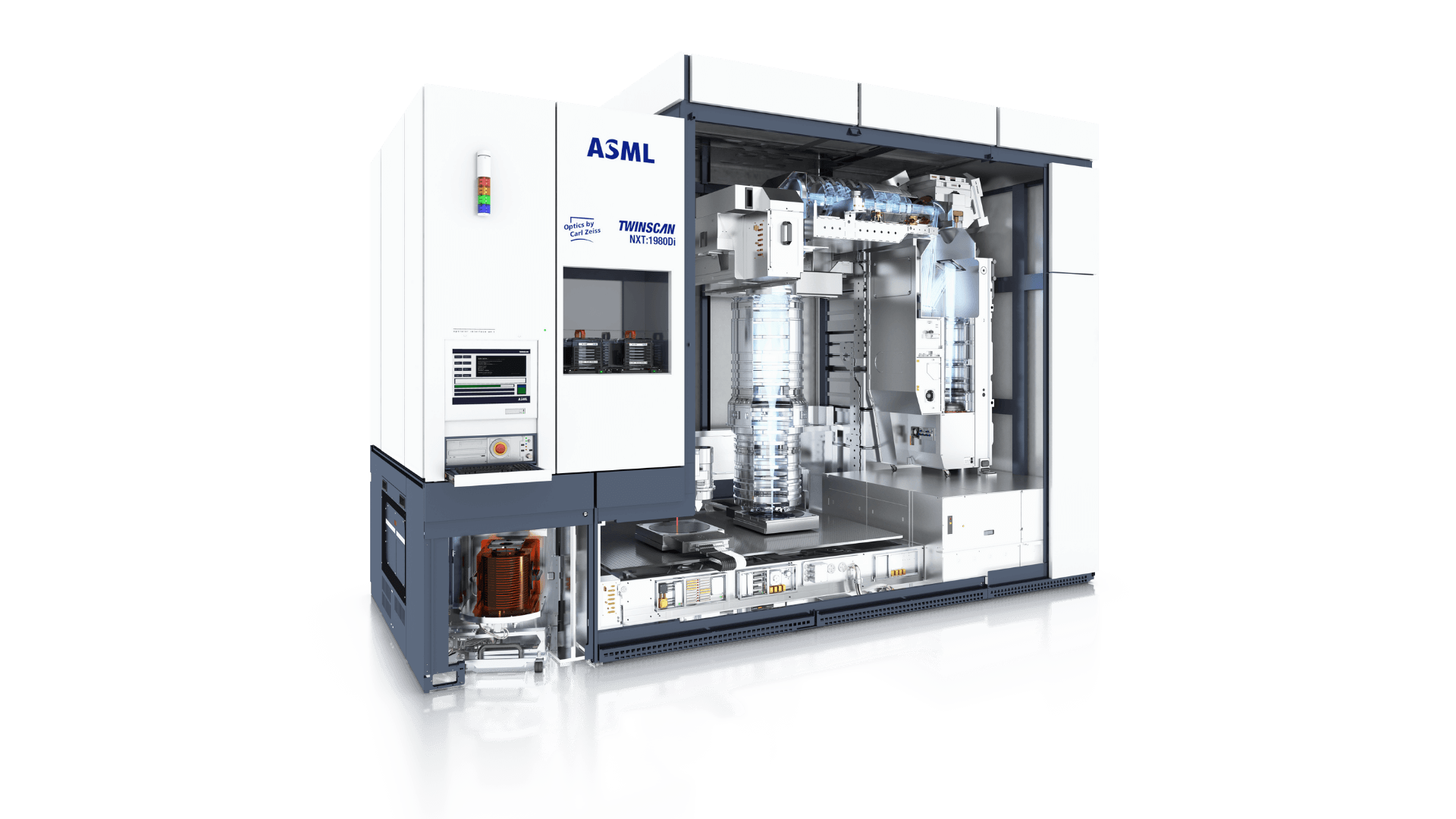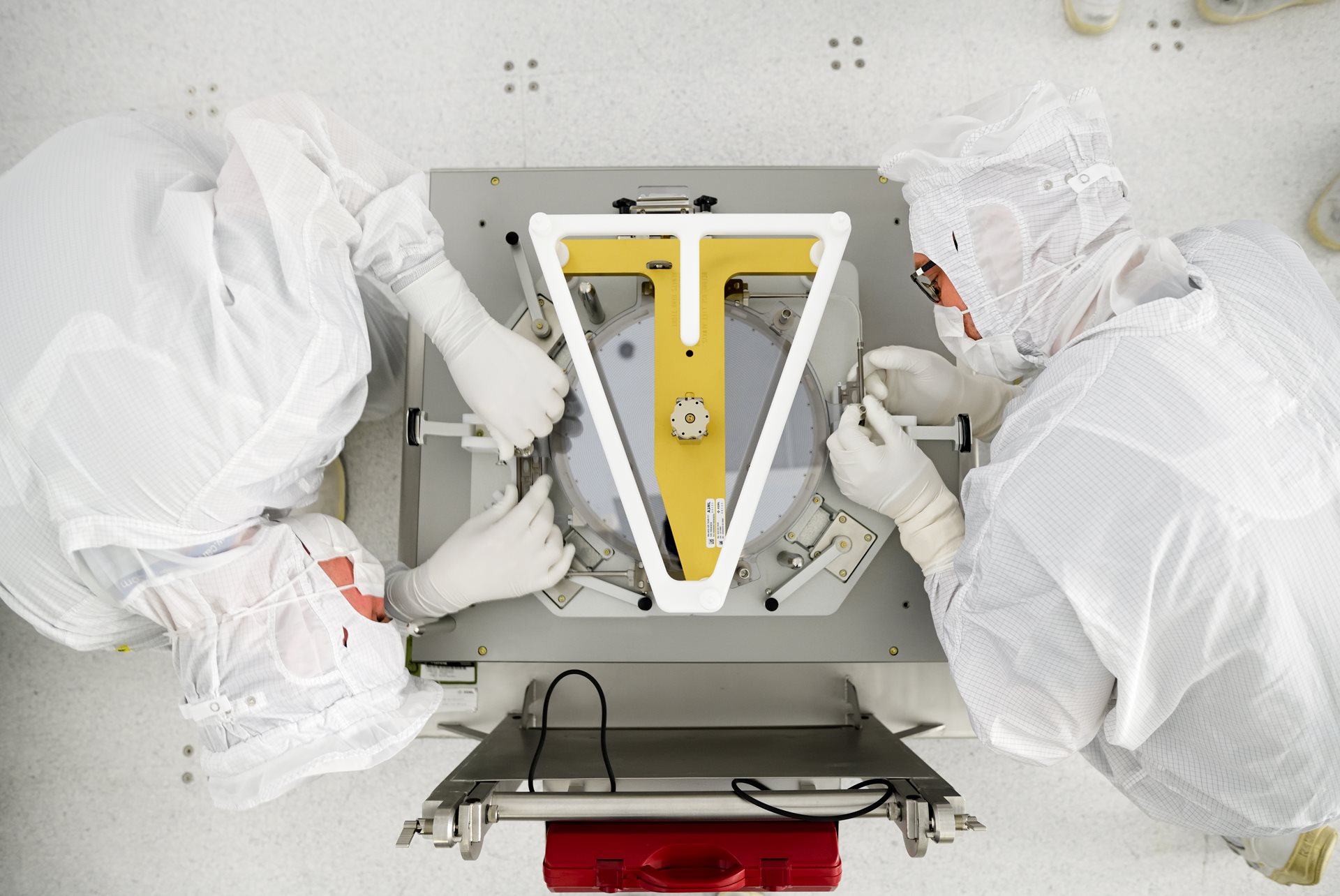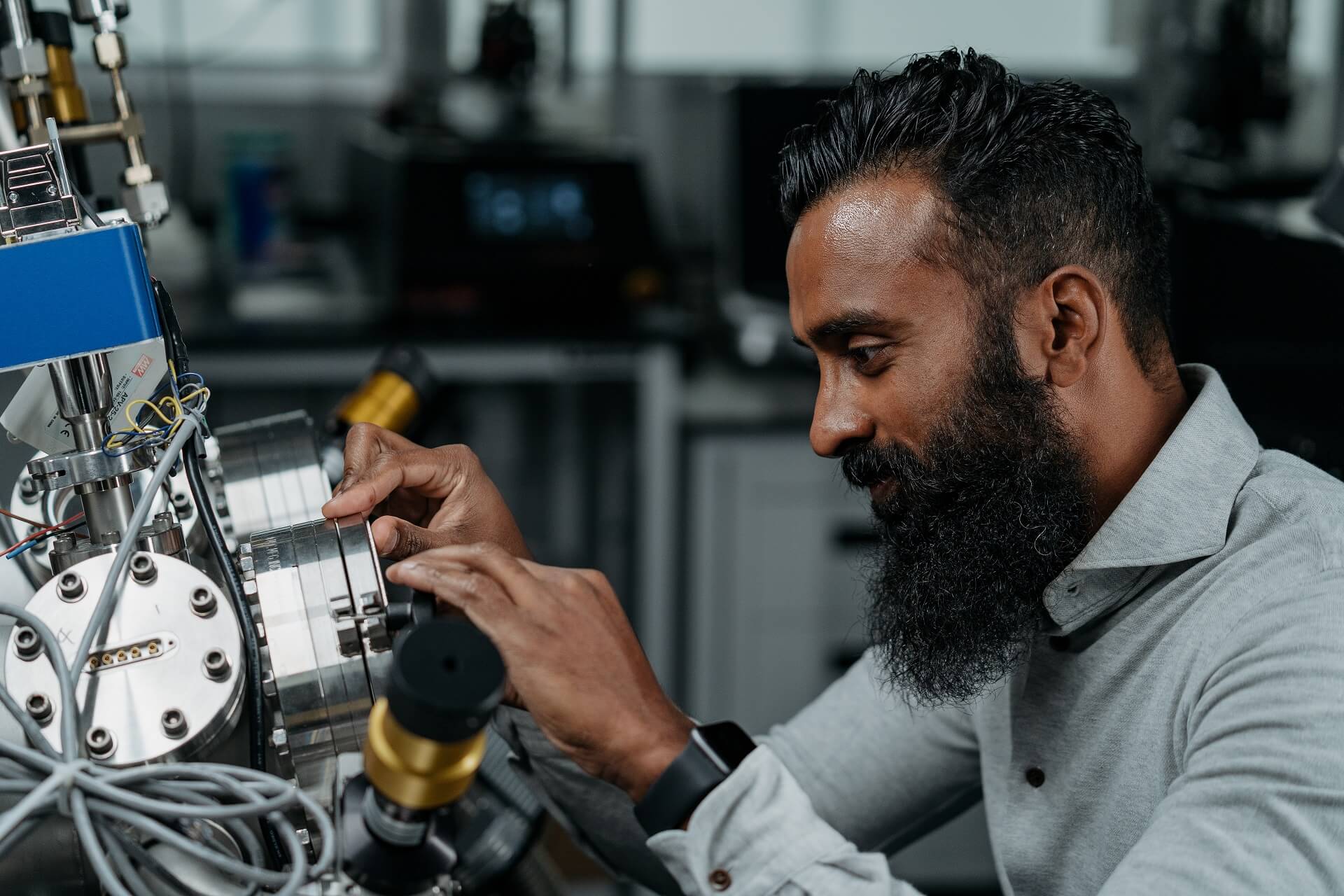Key features & benefits
The TWINSCAN NXT:2000i is a high-productivity, dual-stage immersion lithography tool designed for volume production of 300 mm wafers at advanced nodes.
The system is equipped with an in-line catadioptric lens design, with a numerical aperture (NA) of 1.35 – the highest in the industry.
This system also includes hardware innovations for improved overlay, focus control and cross-matching.
Designed for mix-and-match use with EUV, its modular design allows upgrades from previous generations, and continues to be upgradable in the future.
01.Productivity
The TWINSCAN NXT:2000i boasts high productivity with reduced defectivity. The system’s champion productivity currently stands at 4,600 wafers per day, an achievement made possible by providing optional applications that allow the system to optimize scanner wafer processing time and reduce lot overhead for specific use cases.
The system has shown the fastest ramp-to-maturity ever, getting to a reliability of 150 hours in just 2 months (compared to 6 months in the previous generation).
02. Optics
The TWINSCAN NXT:2000i includes a 1.35 NA 193 nm catadioptric projection lens that can achieve production resolutions down to 40 nm (C-quad) and 38 nm (dipole) and an in-line design supporting full 26 x 33 mm field size, 4X reduction and reticle compatibility with existing designs.
The FlexRay Prepared Illuminator extends the range of conventional and off-axis illumination to enable advanced pupil shaping for low-k1 imaging.
03. Imaging performance
The NXT:2000i can achieve a 2.5 nm cross-matching on-product overlay. The new ORION alignment sensor offers more accurate alignment measurements and enhanced process robustness for better overlay performance.
In addition, the new ultraviolet level sensor mark 2 (UVLS-2) provides even more accurate leveling measurements that improve imaging performance.
Finally, improvements to the wafer table flatness, endurance and clamping mechanism enhance the system’s matching to EUV.



